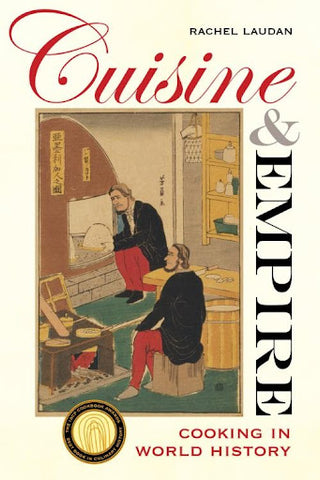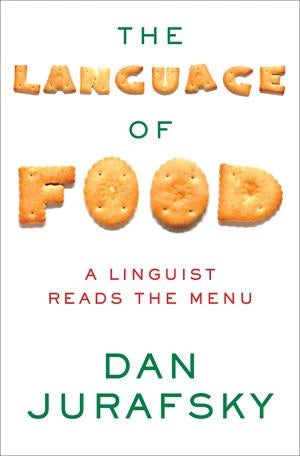Exploring Books about Food History, Politics, and Culture
May 22, 2023
The need for food is older than human civilization. Many researchers believe that the desire for a steady food supply caused humans to settle down, to start raising crops and tending animals, and eventually to found cities. Food may literally be the basis for culture.
The study of food history, politics, and culture is a burgeoning field. Numerous books provide insightful perspectives on food’s critical role in the human experience. Some are comprehensive, sweeping across continents and centuries. Others burrow deep into one thing to help us understand the different ways food is important.
Here are some of the most interesting books on food history, politics, and culture. We chose them because each says something important and surprising.
Food History Books
1. Pigafetta's Philippine Picnic: Culinary Encounters During the First Circumnavigation, 1519-1522, as retold by Felice Prudente Sta. Maria

Pigafetta's Philippine Picnic: Culinary Encounters During the First Circumnavigation, 1519-1522, is an exceptional work of scholarship that delves into the first-hand account of European exploration by Antonio Pigafetta, shedding light on the early interactions between seafaring adventurers and local peoples in the Pacific and Southeast Asia, as well as the shipboard victuals of the time.
Pigafetta, an Italian cartographer and geographer, was among the 18 survivors of the first sea voyage around the world in 1519, led initially by Ferdinand Magellan.
The expedition left Spain in 1519 with the goal of finding a westward route to the Spice Islands of modern-day Indonesia. Along the way, the crew encountered starvation, malnutrition, and food that no Europeans had ever recorded eating. Pigafetta's journal provides a detailed account of the food and culinary traditions of the various islands and communities they encountered during their journey, including the Philippines.
Sta. Maria, a dedicated scholar of Filipino and culinary history, supplements Pigafetta's journals with other sources as ancient as the thirteenth century and as recent as twenty-first-century archaeological discoveries. Her extensive endnotes touch on diverse topics, such as the conjugation of root words in Philippine languages and sixteenth-century Italian coinage.
Using Pigafetta's journals as sources, Sta. Maria highlights various examples, including Magellan's death in what is now the Philippines, which resulted from his demands for food from local villages. Through her work, she aims to showcase the rich and diverse culinary heritage of the Philippines and its connections to global trade and exploration.
The book also includes an extended glossary of food terminology drawn from 19th-century dictionaries of the Cebuano language used in the southwest Philippines. It offers a glimpse into local culinary culture during Pigafetta's time and how it has evolved in the more than 100 years since those dictionaries were written.
2. Ireland’s Green Larder: The Definitive History of Irish Food and Drink by Margaret Hickey

Dive deeply into Irish food history. Margaret Hickey covers several thousand years of hunting, gathering, farming, eating, and drinking in Ireland. The book embraces a wide range of topics, from traditional dishes and ingredients to the impact of historical events, such as the potato famine and the influence of the English on Irish food culture.
Ireland’s Green Larder is organized chronologically, starting with prehistoric and early Christian Ireland and continuing to the present day. Along the way, Hickey paints a vivid picture of Irish life and culture, touching on topics such as the importance of hospitality in Irish society and the role of food in celebrations and religious traditions.
One of the strengths of this book is its attention to detail, with Hickey providing numerous anecdotes and historical references to illustrate her points, such as a 9th-century description of the death of a fat pig as "one of the three deaths that are better than life," and a 16th-century poet's lament about bad butter. Even James Joyce makes an appearance in a scene from "Ulysses," where he recounts a bawdy joke about tea.
While there are illustrative recipes scattered throughout the book, it is Hickey's use of period sources that truly brings the history of Irish food and drink to life. The only thing that could have made this book even better is the inclusion of endnotes or footnotes, as Hickey's sources are clearly more extensive than those that appear in the brief bibliography.
Ireland's Green Larder is a fascinating and informative read for anyone interested in Irish cuisine or food history more broadly. Hickey's passion for the subject is evident throughout, and her storytelling style is easy to read, making this a wonderful starting point for anyone looking to deepen their knowledge of food history.
3. The Jemima Code; Two Centuries of African American Cookbooks by Toni Tipton-Martin

This groundbreaking work sheds light on the overlooked and undervalued contributions of Black cooks and writers to American cuisine. The book explores two centuries of African American cookbooks, starting from the first known cookbook by an African American man, published in 1827.
As a food historian and journalist, Tipton-Martin provides a comprehensive profile of over 150 books ranging from the early 19th century to the 1990s, highlighting the qualifications and contributions of their authors and placing them in a historical context. Through her research, Tipton-Martin highlights the vital role African American women played in shaping American food culture and dispels the stereotypes that have long been associated with "soul food" and African American cooking.
The "Jemima Code" is a term she coined from the minstrel show character appropriated to sell a line of pancake mix in the nineteenth century. The code “assumes that Black chefs, cooks, and cookbook authors—by virtue of their race and gender—are simply born with good kitchen instincts; diminishes knowledge, skills, and abilities involved in their work, and portrays them as passive and ignorant laborers incapable of culinary artistry.”
The book features photographs of rare cookbooks and recipes—even one about barbeque cuisine by a member of the Black Panther party—along with insightful commentary and analysis from Tipton-Martin, offering as much biographical information about the authors as she can.
The Jemima Code is not only an uplifting celebration of African American culinary heritage but also a call to action for greater recognition of the contributions of Black women to American cuisine. It is proof that good scholarship can illuminate entire areas of study that have been previously overlooked.
Books on Food Politics
Food and politics have been intimately connected throughout history, with leaders and governments often using food as a means of control and power. Some of the most compelling food politics books shed light on the impact of food and dining on political power and how political decisions have shaped food systems.
1. Ingredients for Revolution: A History of American Feminist Restaurants, Cafes, and Coffeehouses by Alex D. Ketchum

In this detailed, intriguing, and very readable book, Alex D. Ketchum traces the North American history of feminist restaurants, cafes, and coffeehouses, from the 1970s until the late 1980s.
Ketchum, a lecturer on gender, sexuality, and feminist studies at McGill University, takes readers back to when feminist and lesbian-feminist restaurants were indispensable in the American political and cultural landscape. Ketchum offers an exceptional understanding of the wide range of establishments that were created to address various needs, such as a physical space for socializing, activism, economics, and community building.
Feminist food spaces served as sites of resistance and social change, challenging dominant cultural norms around food, gender, race, and class. Ketchum analyzes the role of these spaces in the broader feminist movement, exploring how they contributed to feminist theory, practice, and activism.
However, this is not a rose-tinted account. Ketchum candidly acknowledges that not every restaurant was successful at making good food, and many feminist restaurants, cafes, and coffeehouses closed after only a few years of operation. But this does not diminish their significance, as they were able to achieve success in other ways.
Ketchum shines a light on the innovative business practices that founders used to overcome their lack of access to capital, as well as their goals for ethical sourcing of ingredients and equitable compensation of workers. She highlights how these restaurants anticipated forces that would still be at play in the hospitality industry fifty years later.
Ingredients for Revolution is an impressive work of research and insight that sheds light on a significant moment in American food history. While feminist and lesbian-feminist restaurants may have almost entirely vanished, their impact endures and continues to inspire further scholarship and inquiry, demonstrating the crucial role that food and food spaces have played in social justice movements.
2. The Philosophy of Curry by Sejal Sukhadwala

Can the term "curry" capture the complexity and diversity of a cuisine that has been shaped by regional differences and cultural influences? What are the origins of curry-like dishes in ancient literature, and how has the use and spread of the word been influenced by colonialism?
These are some of the questions that food journalist Sejal Sukhadwala tackles in her concise yet comprehensive book, The Philosophy of Curry. Published under the auspices of the British Library, Sukhadwala draws on a wide range of sources, from ancient texts to modern-day cookbooks, exploring the linguistic, cultural, and historical dimensions of this ubiquitous term, tracing its roots to ancient civilizations and examining how it has evolved and spread across the globe.
The book is divided into sections that examine different aspects of curry, including its ingredients, preparation, cultural significance, and impact on society. One of the book's strengths is Sukhadwala's study of the philosophical underpinnings of curry, exploring how the dish reflects larger cultural and societal values and its place in contemporary discussions of race, gender, and identity.
Although the book is only 106 pages, Sukhadwala's research is impressive, and she provides a useful bibliography for readers who wish to delve deeper into the subject. Her writing is engaging and easy to read, weaving together personal anecdotes, cultural insights, and historical facts to provide a comprehensive and thought-provoking study of this beloved dish.
While it is unlikely that her work will change how the term “curry” is commonly used, Sukhadwala's nuanced contemplation of its complex history will certainly deepen readers' understanding and appreciation of this rich and diverse cuisine.
3. Communist Gourmet: The Curious Story of Food in the People's Republic of Bulgaria by Albena Shkodrova

Communist Gourmet: The Curious Story of Food in the People's Republic of Bulgaria by Albena Shkodrova is a fascinating investigation of how food and culinary culture were shaped under communism.
Shkodrova, a food scholar and former editor of a leading Bulgarian food and wine magazine, was a child during the final years of Communist Bulgaria. Her intention to write a series of short humorous pieces led to a detailed account of how the Communist regime shaped the everyday food experience of Bulgarians from 1944 until the fall of communism in 1989.
She examines how the communist government sought to control and shape food production, distribution, and consumption to fit their ideology, resulting in the creation of a unique culinary culture that was simultaneously influenced by traditional Bulgarian cuisine, Soviet-style institutional cooking, and international socialist cuisine.
Written in a compelling yet undemanding style, Communist Gourmet covers various topics, including the role of food in propaganda, the development of state-run restaurants and canteens, the impact of food shortages and rationing, and the emergence of an underground food culture in response to government restrictions.
Through interviews with chefs, food writers, and everyday citizens, Shkodrova provides a nuanced understanding of how food was experienced and perceived by different groups within Bulgarian society. The book features photographs that showcase grocery stores, restaurants, and the production of various food items, including cheeses and soft drinks.
Drawing on period cookbooks, Communist Party documents, and close to 100 interviews, the book provides a unique perspective on a time and place. It offers a comprehensive yet limited view of a complex system, but the extensive source notes make it an excellent resource for those interested in further research.
Books on Food Culture
Every culture has its unique food traditions and practices, which have been shaped by a variety of factors, including geography, climate, and historical events. Food is not just a source of sustenance; it also reflects the cultural and social values of a community. Here we highlight a selection of books that delve into the rich and complex relationship between food and culture throughout history.
1. Cuisine & Empire: Cooking in World History by Rachel Laudan

Cuisine & Empire: Cooking in World History by Rachel Laudan, a historian and philosopher of science, investigates the evolution of cuisine throughout human history. In the book, Laudan demonstrates how food and cooking are important markers of culture and civilization and that they have played a central role in the development of human societies.
Laudan's approach is comparative, looking at food cultures around the world and across different time periods. She argues that cuisines are not static but rather evolve and change in response to political, economic, and cultural factors. She also examines the role of colonialism in shaping global food cultures and how the exchange of food and culinary knowledge between different cultures has led to new and hybrid cuisines.
Laudan's viewpoint may challenge those who believe in the uniqueness of their own cuisine, but her capacity to discern recurring patterns in the way societies have perceived their food in contrast to that of other cultures is convincing.
The book is organized thematically, with chapters on the origins of cooking, the role of food in religion and ritual, the development of haute cuisine, and the globalization of food. Throughout, Laudan emphasizes the importance of understanding food and cuisine in their historical context and challenges some assumptions and myths that have developed around certain foods and culinary traditions.
Her extensive research covers a wide range of topics, from the baking practices of ancient Romans to the spread of Buddhist culinary concepts throughout Asia to the impact of Filipino cuisine on Mexican traditions.
Cuisine & Empire has been praised for its interdisciplinary approach and riveting writing style. It is considered a significant contribution to the field of food studies and has been used as a textbook in courses on food history, anthropology, and cultural studies.
2. Consider the Fork: A History of How We Cook and Eat by Bee Wilson

Bee Wilson's absorbing analysis of culinary history, Consider the Fork, emphasizes the significance of cooking and eating implements throughout human civilization.
Wilson, a food writer and historian, examines everything from the humble wooden spoon to the modern microwave oven, exploring how these innovations have changed the way we cook, eat, and think about food. She reveals how our tools have been shaped by the food we eat and, in turn, how they have influenced our perceptions of what is edible.
Consider the Fork is both informative and engaging, taking us on a journey through time and across cultures to explore the captivating stories behind the utensils and gadgets we use in the kitchen. Along the way, Wilson touches on topics such as the development of chopsticks in China, the Icelandic practice of burying bread near geothermal springs to bake it, the role of the fork in European aristocratic dining, the impact of modern technology on home cooking, and even Albert Einstein's design for a refrigerator.
The book is divided into eight broad chapters, each focusing on a specific tool. Wilson uses these tools to delve deeper into the history of food and culinary practices. The chapters include “Pots and Pans” (with a focus on the rice cooker), “Knife” (with a mezzaluna), “Fire” (with a toaster), “Measure” (with an egg timer), “Grind” (with a nutmeg grater),” Eat” (with tongs), “Ice” (with molds), and “Kitchen” (with coffee).
In addition to being a history of kitchen technology, Consider the Fork is also a meditation on how our relationship with food has evolved over time. Wilson's writing is thoughtful and evocative, and she has a gift for bringing the history of food to life in a way that is both smooth and thrilling, making you feel like you are on the journey with her and can’t wait to know what happens next.
3. The Language of Food: A Linguist Reads the Menu by Dan Jurafsky

The Language of Food by Dan Jurafsky, a professor of linguistics and computer science at Stanford University, explores the vocabulary used in menus and how it reflects cultural and social attitudes toward food. Jurafsky also delves into the etymology of words commonly found on menus, such as "filet mignon" and "sushi," and how their meanings have evolved.
The book also examines the influence of geography, history, and social class on food language. For example, Jurafsky discusses topics such as the linguistic ancestry shared by a cookie (macaron) and pasta (macaroni) and the correlation between the price of a dinner and the expected number of menu options by Americans. He also explores the role of gender in food terminology, analyzing how the names of dishes and ingredients are often gendered and how this reflects societal gender norms.
Despite the scholarly nature of the content, Jurafsky presents it in an accessible and engaging way and provides interesting anecdotes and examples to illustrate his points, such as the history of fortune cookies and the marketing of Coca-Cola in China. This book is an entertaining and informative read for anyone interested in the language of food.
Feast on Knowledge
Through the lenses of food history, food politics, and food culture, these books and their authors offer valuable insights and perspectives that deepen our understanding of the world around us.
By exploring the origins of our food, how it has been used to exercise power and control, and the impact of food on our social and cultural identities, we gain a deeper appreciation for the complexities of our global community. We encourage readers to explore these books and delve into the captivating world of food history and scholarship, where one can discover a rich tapestry of stories and experiences that have shaped our world.
If you would like to further explore the role of food in history, politics, and culture, we have hundreds of titles in stock to enrich you. If you can’t find what you are looking for on the website, contact us at letters@kitchenartsandletters.com, and one of our expert team will find the perfect book for you.


